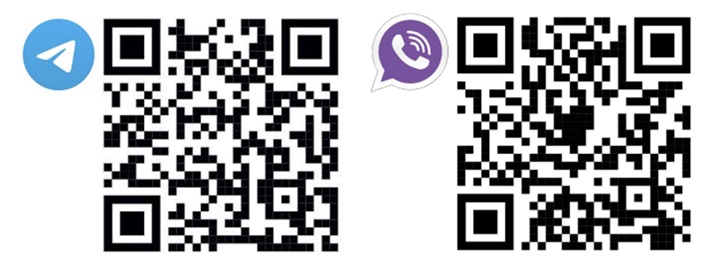New Humanitarian Chatbot Launched to Help Conflict-Affected Communities in Ukraine
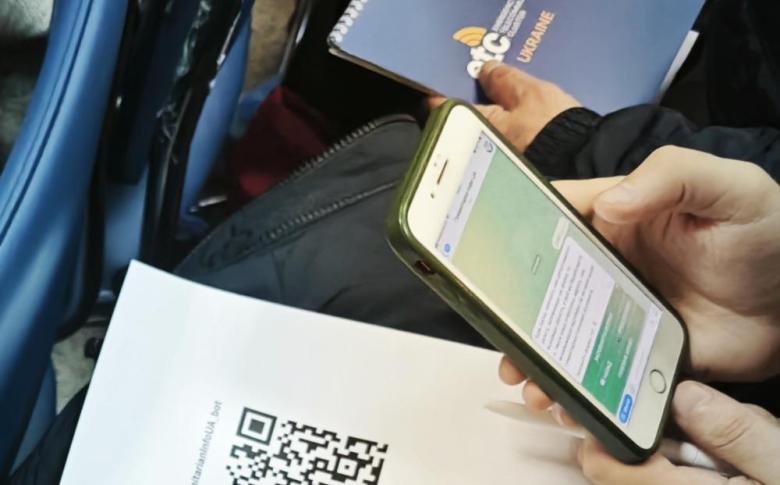
Millions of people in Ukraine require urgent humanitarian support. Some have fled their homes alongside loved ones in search of relative safety. Some are building back the shattered pieces of their lives. And most are living with limited access to essential services.
Humanitarians sought a way to connect these communities with the assistance they urgently need.
Ukraine’s Humanitarian Info UA Chatbot is a digital platform created to support communities impacted by the conflict in Ukraine. It was launched in May 2025 in response to an inter-agency request from the Cash Working Group (CWG) and the Accountability to Affected Populations Working Group (AAP WG), who recognized the need for such a service.
The chatbot was rolled out by the Emergency Telecommunications Cluster (ETC) in collaboration with the Ukraine technology team of the World Food Programme, leveraging their technological experience and innovation.
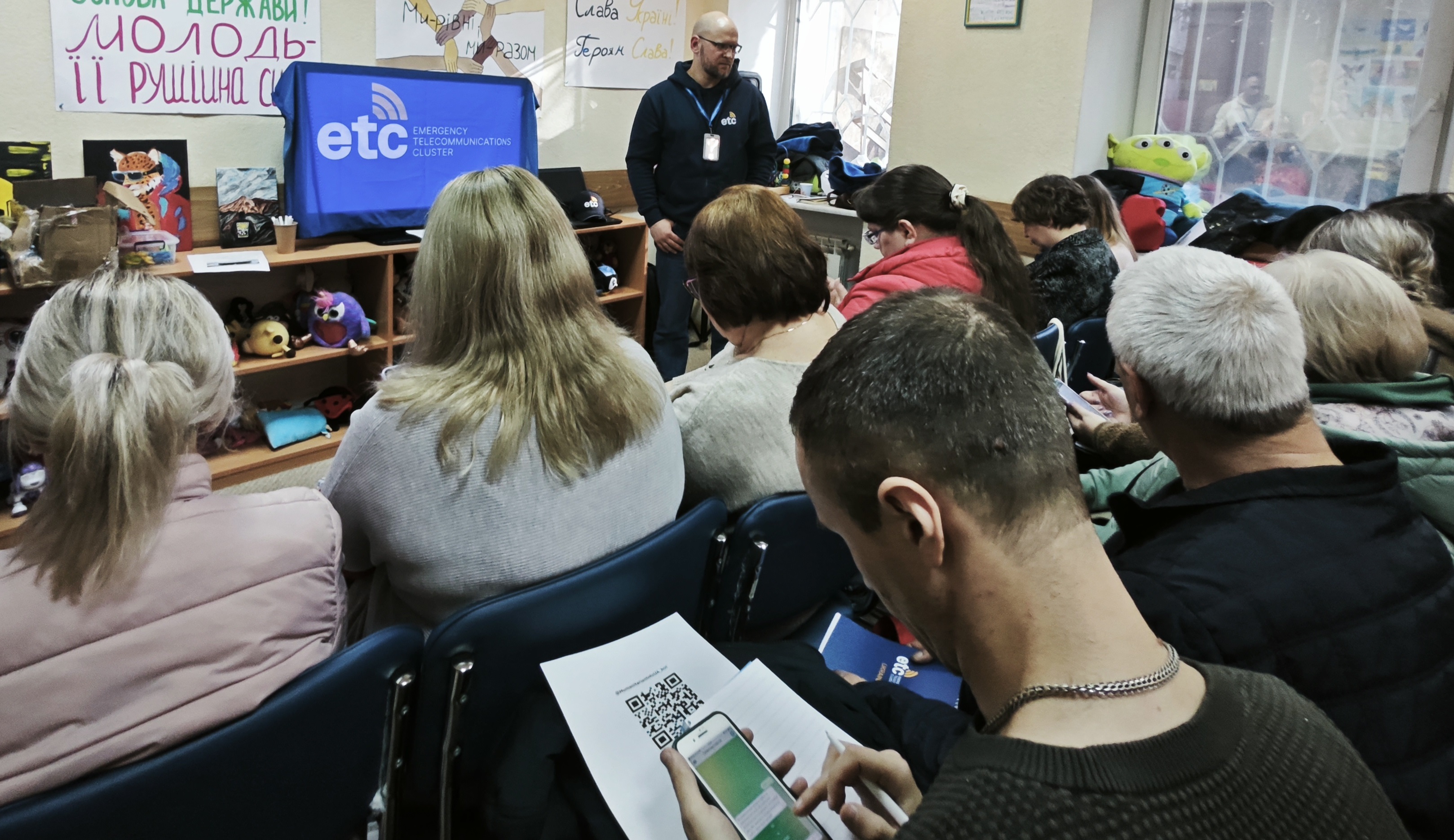
25 users in a focus group tested the new Chatbot. Photo: WFP/Oleksandr Sytai
Critically, the chatbot service is targeted towards newly internally displaced people who are struggling most with their situation.
A trusted source of verified information
Designed as a centralized, one-way communication tool, the Humanitarian Info UA Chatbot provides affected people in Ukraine with clear, verified, and up-to-date information on humanitarian support. The chatbot focuses on humanitarian cash assistance, including both cash and in-kind aid provided by a wide range of humanitarian organizations operating in Ukraine.
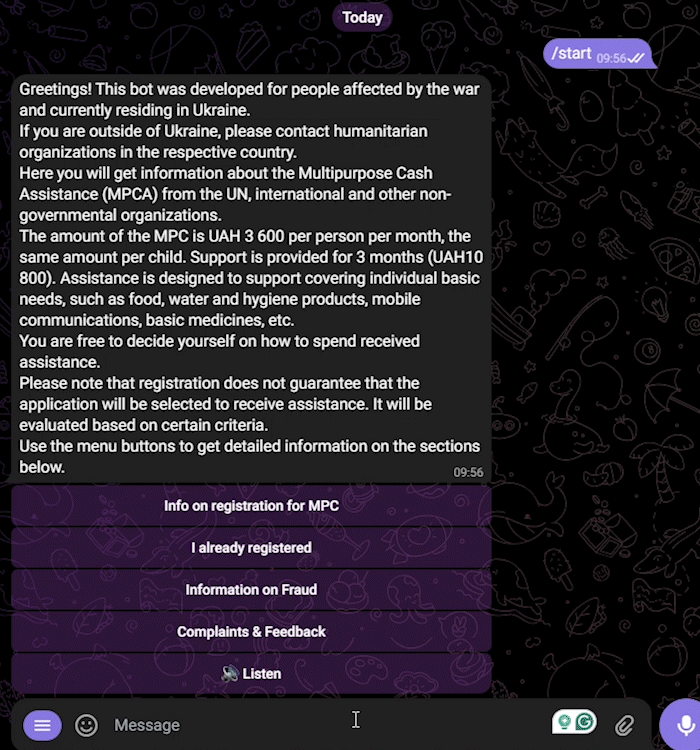
The chatbot uses the principle of ready-made answers to the most frequently asked questions about humanitarian cash assistance and acts as a walk-through guide on information most critical to affected people.
Crucially, it can share the contact details of humanitarian organizations in Ukraine who can help. Its goal is to serve as a trusted entry point for those seeking reliable and specific information during times of uncertainty.
Combating misinformation and promoting anti-fraud awareness
Beyond providing practical aid information, the chatbot also includes content designed to raise awareness about anti-fraud measures and help prevent the spread of misinformation. By offering clear, consistent messaging from a single verified source, the tool helps affected individuals make informed decisions during crises and displacement.
“This tool enhances the humanitarian community’s ability to reach people quickly and efficiently with life-saving information,” says Maksym Khmeliuk, Information Management Officer for the ETC in Ukraine. “It reduces uncertainty and helps people make informed decisions during times of displacement and crisis.”
Developed for communities, with communities
The chatbot was developed and fully funded by the ETC, which embedded user privacy and simplicity at its core. Notably, the platform does not collect private user data and is hosted on secure infrastructure to ensure both information integrity and operational resilience of the platform.
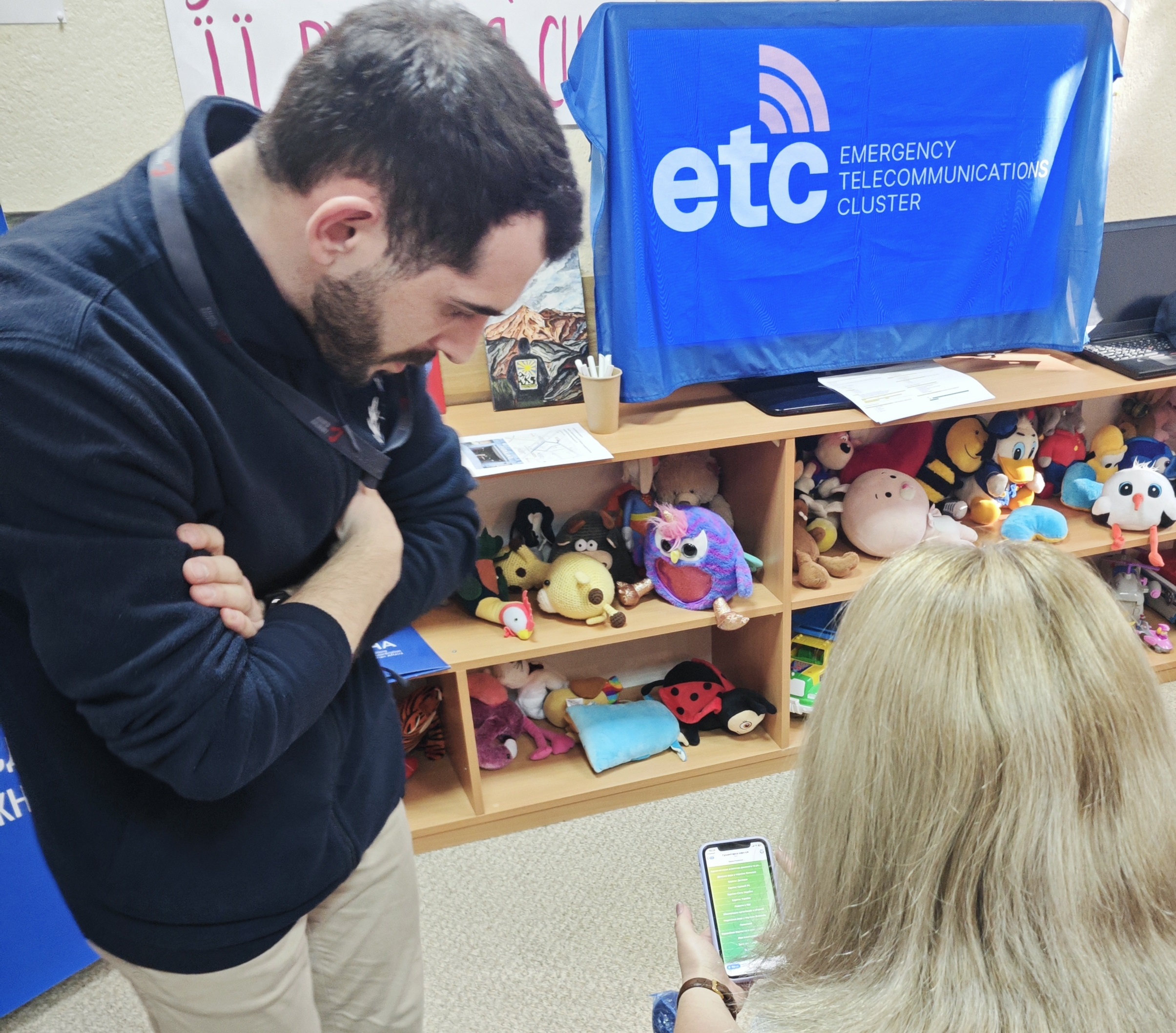
ETC guides users through the Chatbot services. Photo: WFP/Maksym Khmeliuk
Conceptualized in December 2024, the chatbot initiative underwent rigorous testing in two phases: first in January 2025 with 27 representatives from 26 UN agencies, INGOs, and NGOs; and later in March 2025 with 25 individuals from the affected population, including internally displaced people and evacuees. These phases helped to refine the users’ experience and ensure the tool met the needs of its target audience.
Chatbot tested, feedback heard
In March 2025, the ETC wrapped up the second phase of testing for its Humanitarian Info UA Chatbot. The 25 test users—mostly internally displaced people—provided valuable feedback on usability and areas for improvement.
The overall results were positive—92% found the chatbot easy to use and 84% said the content was useful. Even so, testers did flag some technical issues and barriers to the usability of the platform. They also called for added features, such as an FAQ section, multilingual support, and more direct links to humanitarian organizations.
Rollout initiated
Using the feedback above, the ETC implemented changes to the chatbot before rolling out the new service for communities on 01 May 2025 across Telegram and Viber, two of Ukraine’s most popular messaging platforms:
- Telegram @HumanitarianInfoUA_bot
- Viber @humanitarianinfoua
Since its launch, the demand for the chatbot service has been demonstrably high, especially in the southern and eastern regions of Ukraine where the fighting is at the frontlines.
A staggering 16,000+ users have accessed the chatbot service, with 23,500 messages sent so far on the platform from those seeking humanitarian assistance.
“Thanks to this bot, people affected by war in Ukraine have access to trusted and an up-to-date source of information about multipurpose cash assistance,” says OCHA’s Alexandra Malukalo, Humanitarian Affairs Officer with the Cash Working Group, a key partner in the chatbot project.
A milestone in digital humanitarian response
The launch of the Humanitarian Info UA Chatbot marks a significant milestone in leveraging digital tools to address humanitarian needs.
It marks another step toward making humanitarian support faster, clearer, and more accessible for those who need it most, and it exemplifies the power of inter-agency collaboration and innovation in delivering responsive, dignified support to communities in crisis.
Explore the Chatbot:
Scan the QR codes below (currently available in the Ukrainian language only) or visit ReliefWeb for more information on how the chatbot is helping to share updates related to humanitarian cash assistance3 with affected communities in Ukraine.
